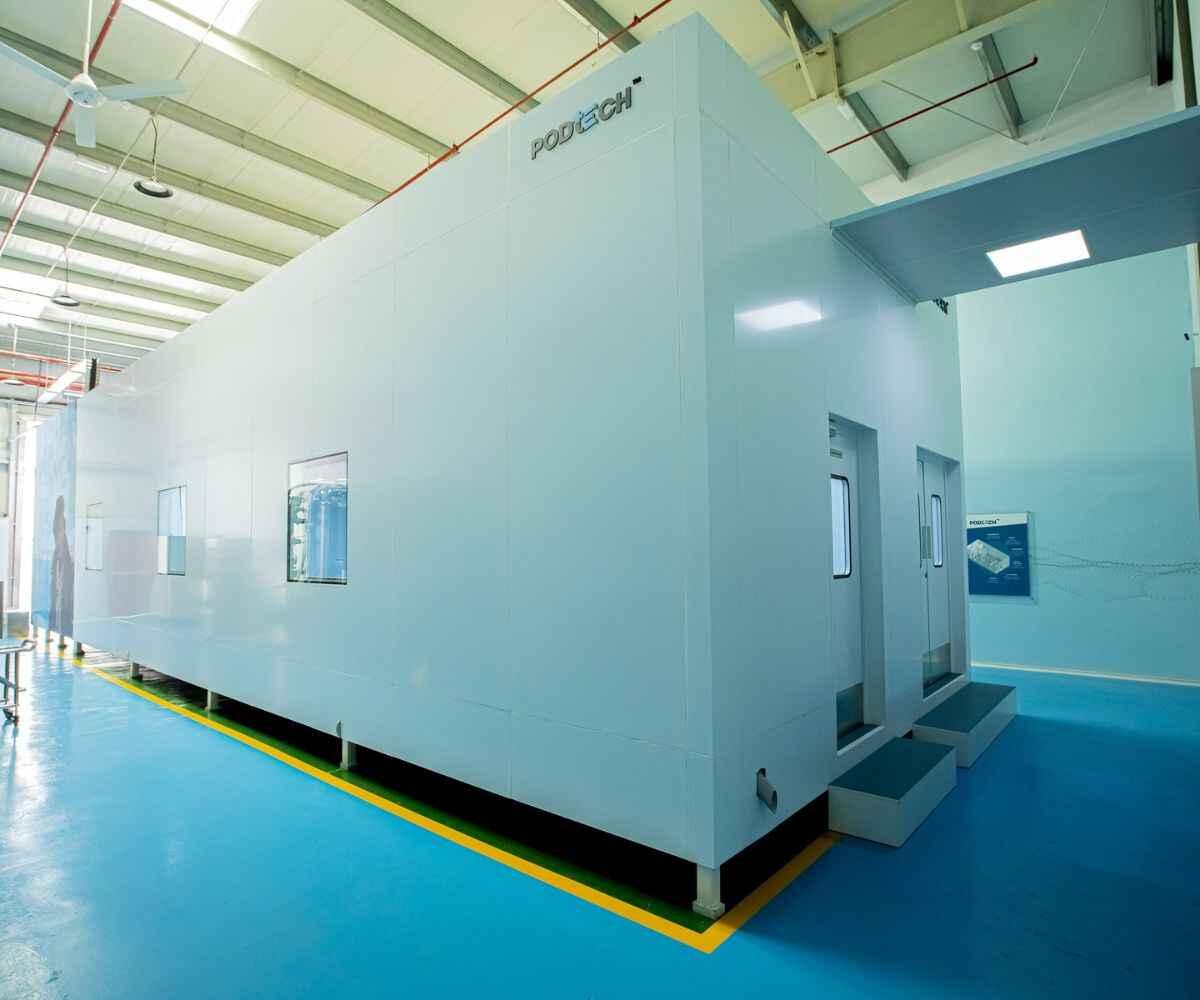Softwall modular cleanrooms have become a preferred solution for industries requiring controlled environments with flexibility, cost-efficiency, and compliance with stringent cleanliness standards. Designed with lightweight panels and modular framing systems, these cleanrooms provide exceptional adaptability, enabling businesses to expand, reconfigure, or relocate with minimal disruption.
In this guide, we provide a detailed overview of softwall modular cleanroom design, benefits, applications, compliance standards, and installation best practices—equipping you with the knowledge to select the right solution for your operations.
What Are Softwall Modular Cleanrooms?
A softwall modular cleanroom is a controlled environment constructed using a lightweight aluminium or steel frame with flexible clear or opaque vinyl or PVC panels. Unlike hardwall cleanrooms, softwall structures allow for easy reconfiguration, quick installation, and cost-effective upgrades while still meeting ISO and GMP cleanliness classifications.
Key characteristics include:
- Modular structure allowing scalability.
- Lightweight panels that reduce construction time.
- Quick assembly without extensive building modifications.
- Compliance-ready for ISO Class 4 to Class 8 cleanroom standards.
Advantages of Softwall Modular Cleanrooms
Softwall cleanrooms offer several strategic benefits over permanent cleanroom installations:
1. Cost-Effective Installation
Softwall systems require less structural support and fewer materials, reducing construction costs. They also require minimal downtime, ensuring operational continuity.
2. Flexibility in Design
They can be expanded, reduced, or relocated to adapt to evolving production requirements without the high costs of structural renovations.
3. Rapid Deployment
With prefabricated components, a softwall cleanroom can be installed in days rather than months, enabling faster compliance with project deadlines.
4. Lower Maintenance Costs
Replacement of panels and components is straightforward, ensuring low long-term operational expenses.
5. Compliance-Ready
Softwall cleanrooms can meet ISO 14644-1 standards and GMP guidelines, essential for industries such as pharmaceuticals, microelectronics, and biotechnology.
Key Components of Softwall Modular Cleanrooms
A high-performance softwall cleanroom consists of several crucial elements:
1. Structural Frame
Usually made from anodised aluminium or stainless steel, the frame provides durability, corrosion resistance, and structural stability.
2. Softwall Panels
Constructed from anti-static, fire-retardant PVC or vinyl, panels provide clear visibility or privacy depending on operational needs.
3. Ceiling Grid
Holds HEPA or ULPA filtration units, light fixtures, and ceiling tiles in place to ensure uniform airflow distribution.
4. Air Filtration System
HEPA filters remove 99.97% of airborne particles at 0.3 microns, while ULPA filters capture 99.999% at 0.12 microns, ensuring compliance with the required cleanliness class.
5. Lighting Systems
LED or fluorescent cleanroom-rated lights provide bright, shadow-free illumination essential for detailed work.
6. Access Control
Options include sliding or swinging doors and strip curtains to maintain pressure differentials while allowing easy access.
Applications of Softwall Modular Cleanrooms
These cleanrooms serve a diverse range of industries, including:
- Pharmaceutical Manufacturing – Compounding, packaging, and aseptic processing.
- Biotechnology – DNA sequencing, cell culture, and R&D labs.
- Microelectronics – Wafer processing, circuit assembly, and component testing.
- Medical Devices – Sterile assembly, inspection, and packaging.
- Aerospace & Defence – Precision assembly and sensitive equipment calibration.
- Food & Beverage – Hygienic packaging and contamination control.
Best Practices for Installing a Softwall Modular Cleanroom
To ensure optimal performance and regulatory compliance, follow these best practices:
1. Conduct a Site Assessment
Evaluate airflow patterns, space limitations, and potential contamination sources before installation.
2. Select the Right Cleanroom Class
Match the ISO classification to your industry’s regulatory requirements. Over-specifying increases costs unnecessarily, while under-specifying risks compliance failures.
3. Choose Quality Materials
Select anti-static, non-shedding, and chemical-resistant panels to maintain cleanliness and durability.
4. Optimise Airflow Design
Integrate laminar airflow systems to ensure contamination is flushed downward and away from sensitive areas.
5. Plan for Future Expansion
Design the layout with modular scalability in mind, allowing easy integration of additional bays or equipment.
Maintenance and Operational Tips
Maintaining your softwall modular cleanroom is essential to ensure performance and compliance:
- Regular Filter Testing – Perform particle count and airflow testing per ISO and GMP guidelines.
- Panel Cleaning – Use non-abrasive, cleanroom-approved wipes and solvents to prevent damage.
- Environmental Monitoring – Track humidity, temperature, and particle levels continuously.
- Personnel Protocols – Enforce gowning, glove usage, and contamination control training.
Why Choose Softwall Modular Cleanrooms?
For businesses needing agility, cost-efficiency, and compliance, softwall modular cleanrooms offer an unmatched balance of performance and flexibility. They deliver high contamination control while adapting to dynamic operational demands—making them the go-to choice for fast-growing, regulated industries.

